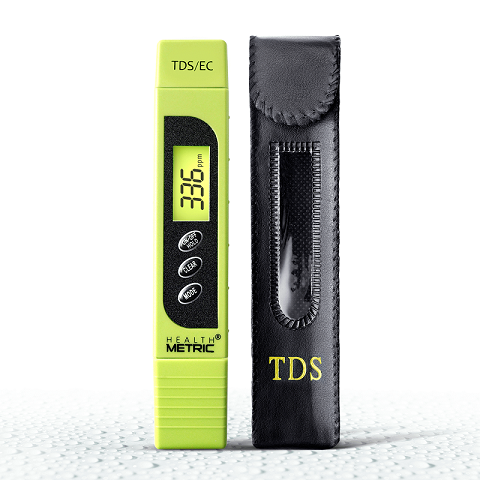TDS and pond-keeping
TDS or Total Dissolved Solids is the sum of all the chemical ions dissolved in the water. These substances are not necessarily "bad" chemicals. They're mostly minerals and salts in your pond. The TDS level is influenced primarily by the water source used to fill the pond. Some backyard ponds will have naturally high TDS levels while others will be low, depending on the water source.
Most people refill their pond as water evaporates. When water evaporates, it leaves behind all the salts, minerals and pollutants. Over time these substances become more concentrated in the water, causing a rise in TDS level. The TDS in your pond will also increase due to surface water entering the pond, fish waste, plant fertilizers and leaching from the soil in potted aquatic plants. Therefore, it is important to monitor TDS in your pond, watching for significant increases over time that might indicate accumulating salts, minerals, nutrients and declining water quality.
How do I measure TDS in my pond?
The easiest way to measure TDS in your pond is to use a TDS meter. The Health Metric TDS meter is a simple and inexpensive device that is perfect for pond water testing. Just take a water sample from the pond, place the meter’s probe into the sample and gently swirl. The digital display will stabilize in a moment, indicating the TDS level.
What is a good TDS level?
TDS is neither good nor bad unless it is compared to the desired level. If the tap water used to fill your pond has a TDS level around 200 ppm and your pond has a TDS level of 1000 ppm, it indicates a build-up of dissolved substances in the pond water. The cause of the increasing TDS is most likely a build-up of minerals and algae-promoting nutrients like phosphate. Addition of salt to the pond will also raise the TDS since salt does not evaporate with the water. The rise in TDS, relative to a baseline TDS, indicates that a water change is probably due.
Why do I need to change the water in my pond?
Unlike large, natural ponds and lakes, our garden ponds have an artificially high level of fish and plants. Splashing waterfalls and fountains accelerate evaporation, resulting in an ever-increasing level of dissolved substances in the water. Partial water changes dilute wastes and algae-promoting nutrients and bring the TDS level back down to baseline levels.
Final recommendations
Measuring TDS in koi ponds and water gardens is a “tool” for monitoring the condition of the water in terms of accumulating dissolved minerals, salts, algae-promoting nutrients, and other substances. However, a TDS measurement is not a substitute for testing kits like ammonia, pH or nitrite. Likewise, these individual parameter test kits cannot measure the accumulation of dissolved substances in the pond water.
Experienced pond-keepers and professional biologists measure TDS on a monthly basis (or even more frequently sometimes). Ideally, you’ll have water quality logbook or pond diary that documents water quality tests throughout the year. Record keeping is easy and will show trends in water quality and the appearance of your pond throughout the year including water clarity, plant growth, lily blooms and more!
P.S. If you are looking for a reliable TDS and EC meter to monitor TDS levels in your pond, check out our new easy to use digital TDS Meter.


